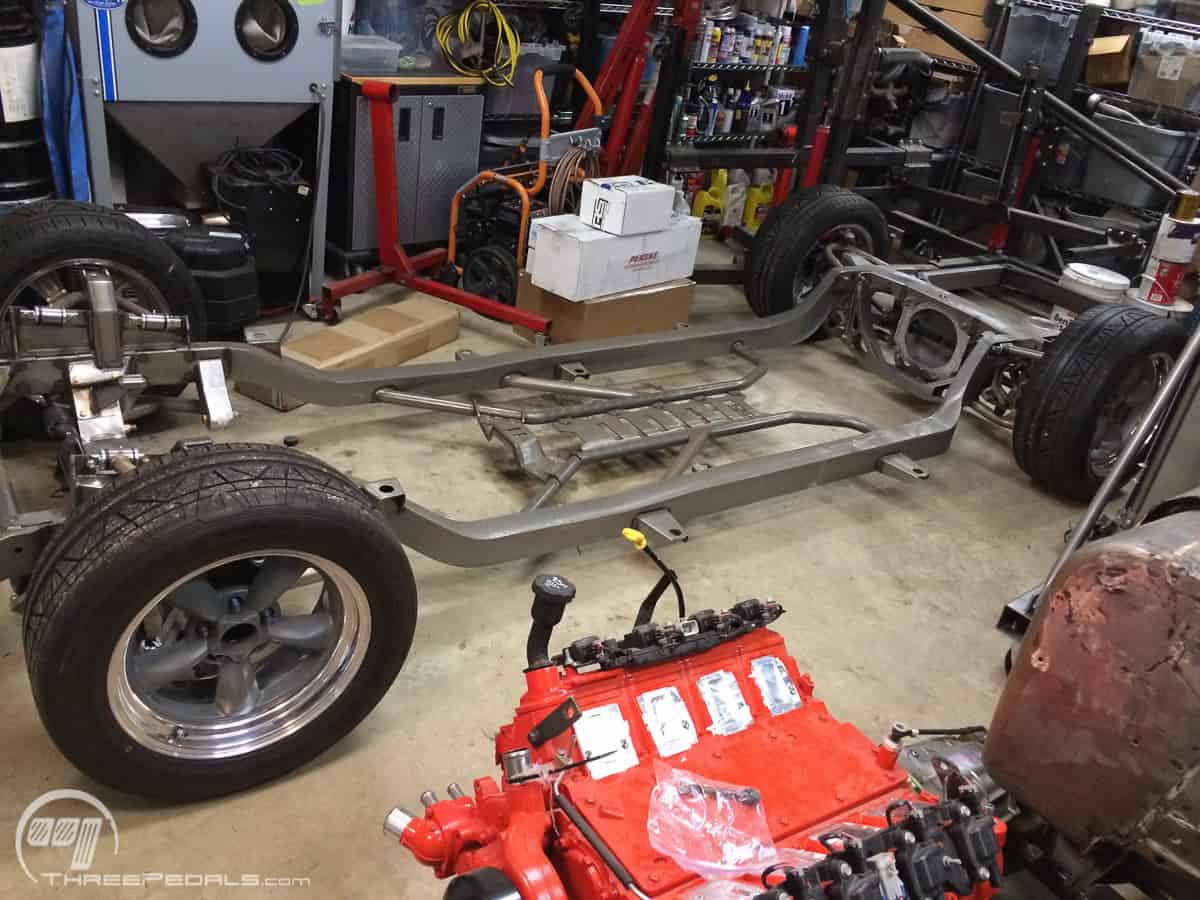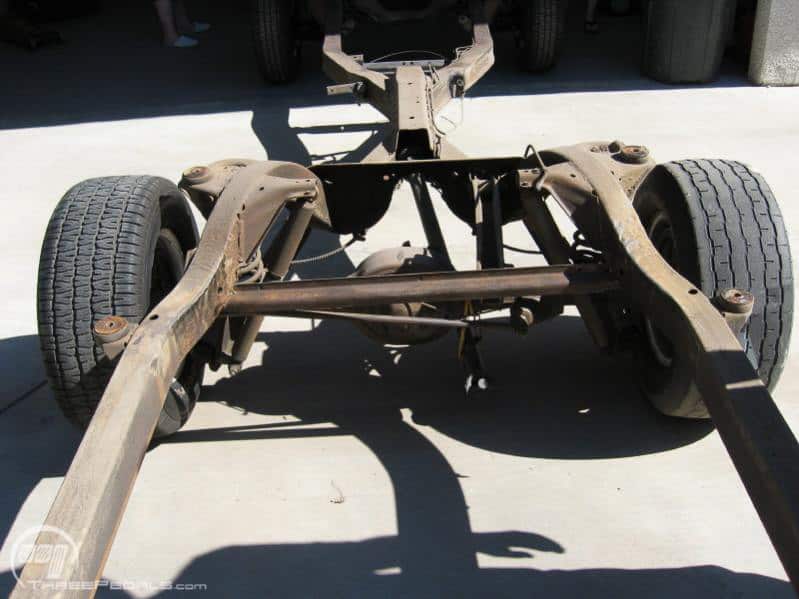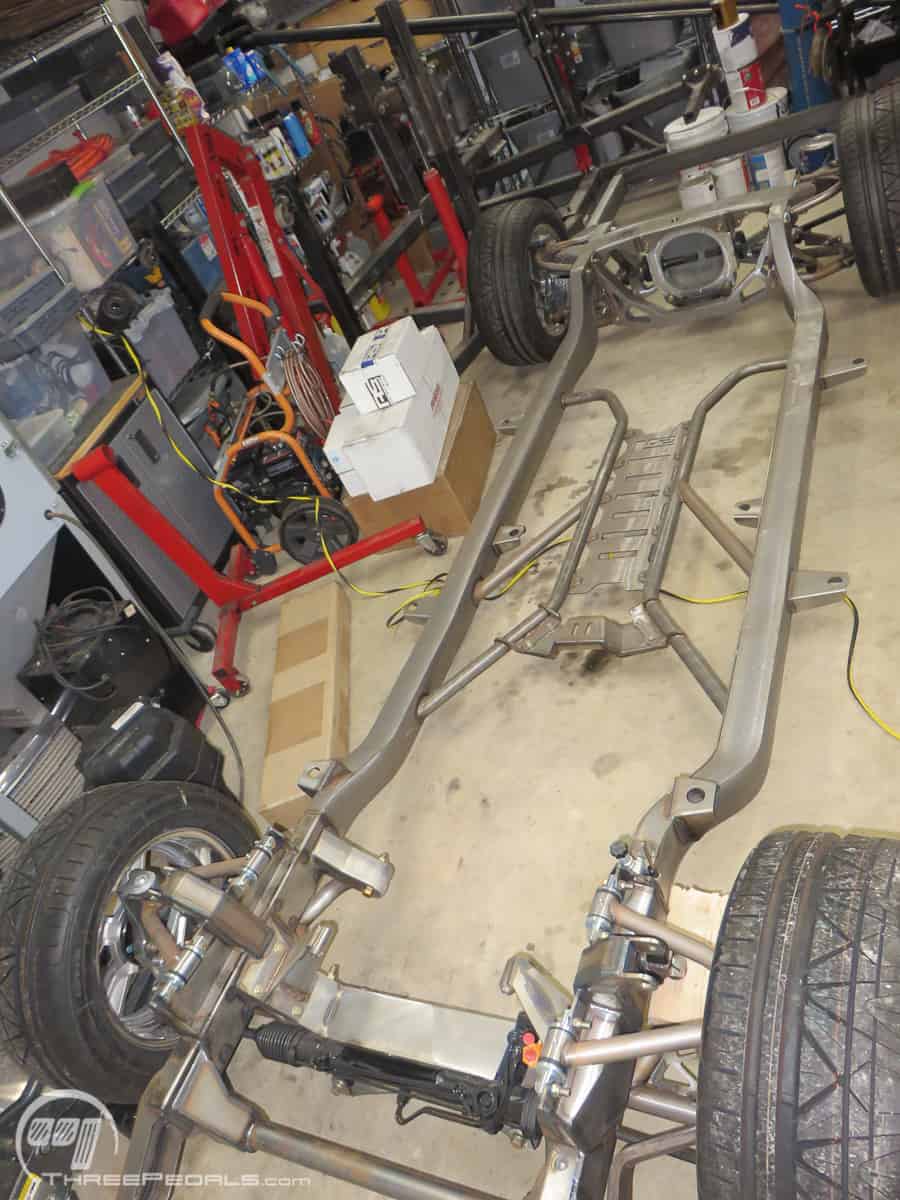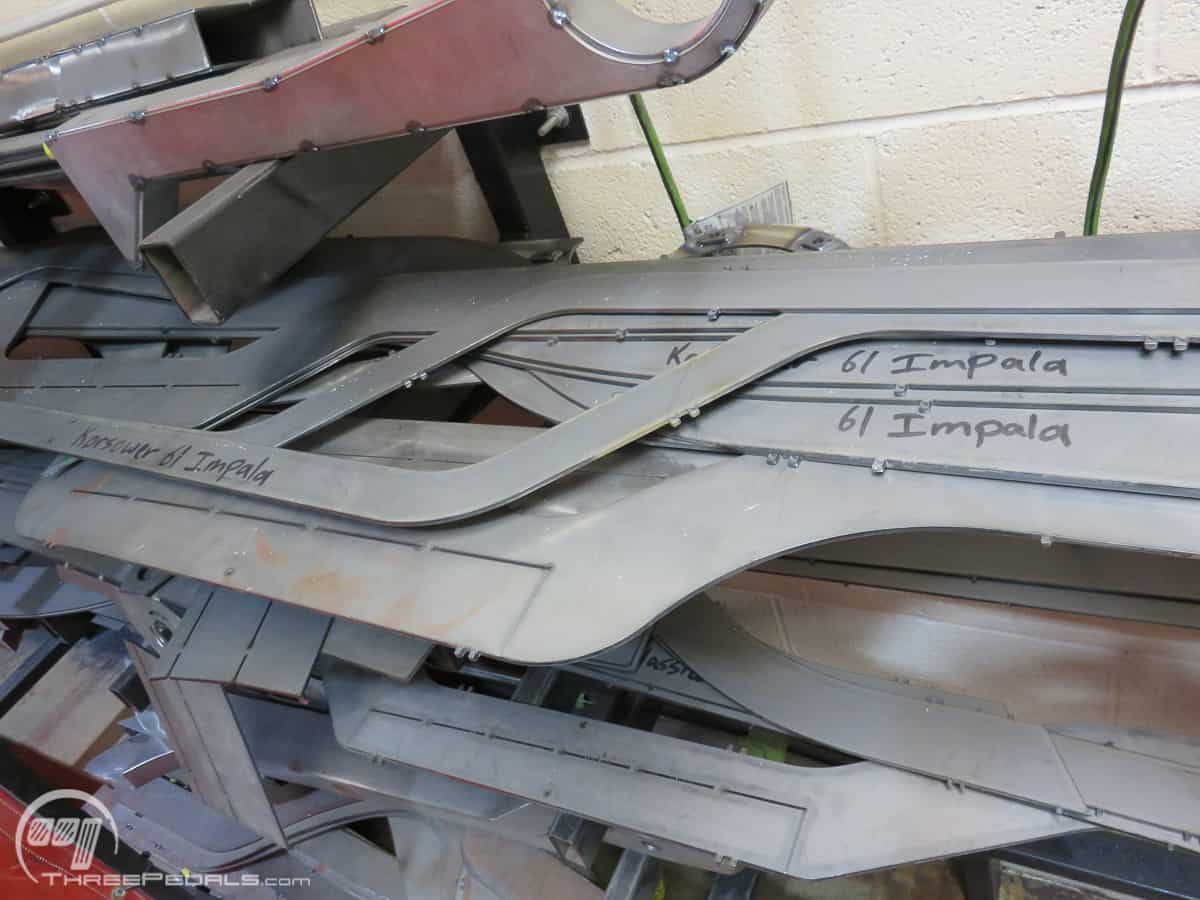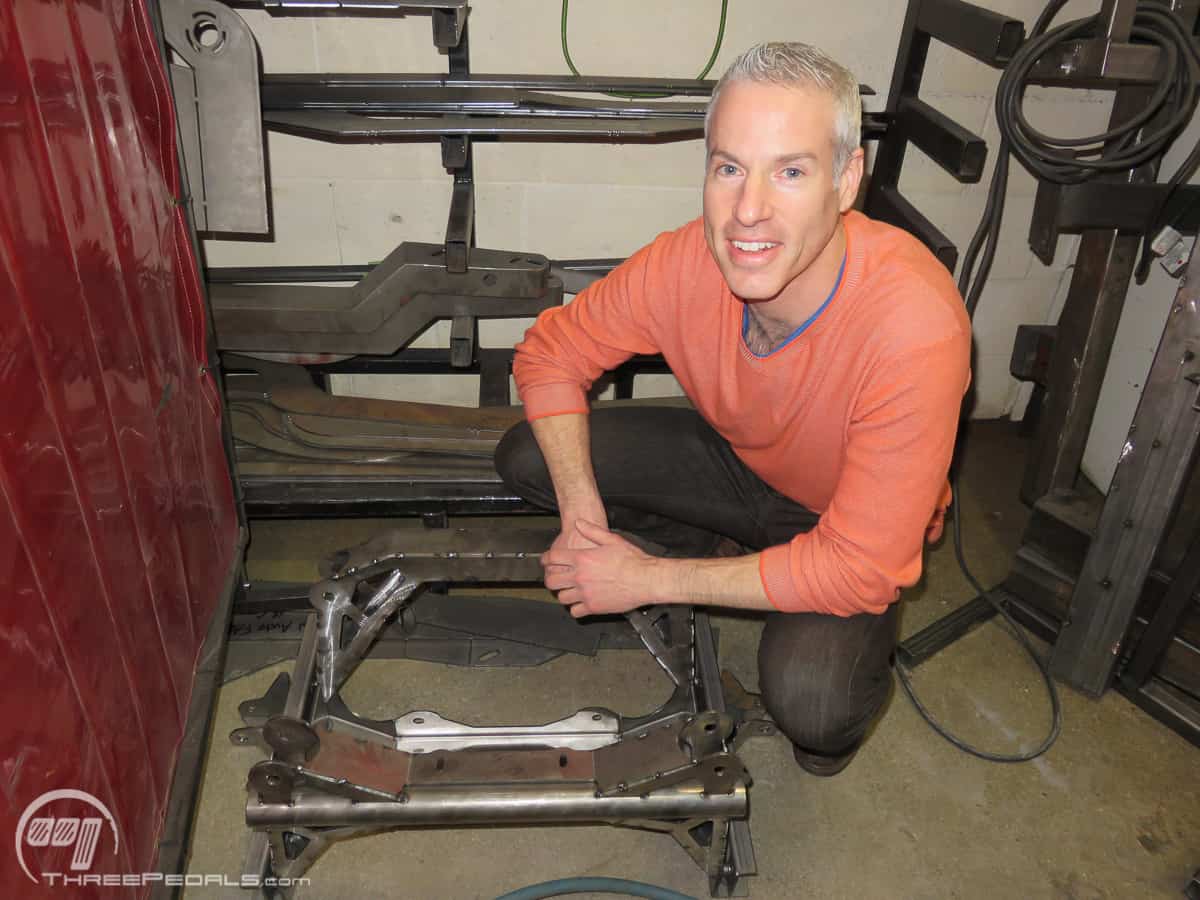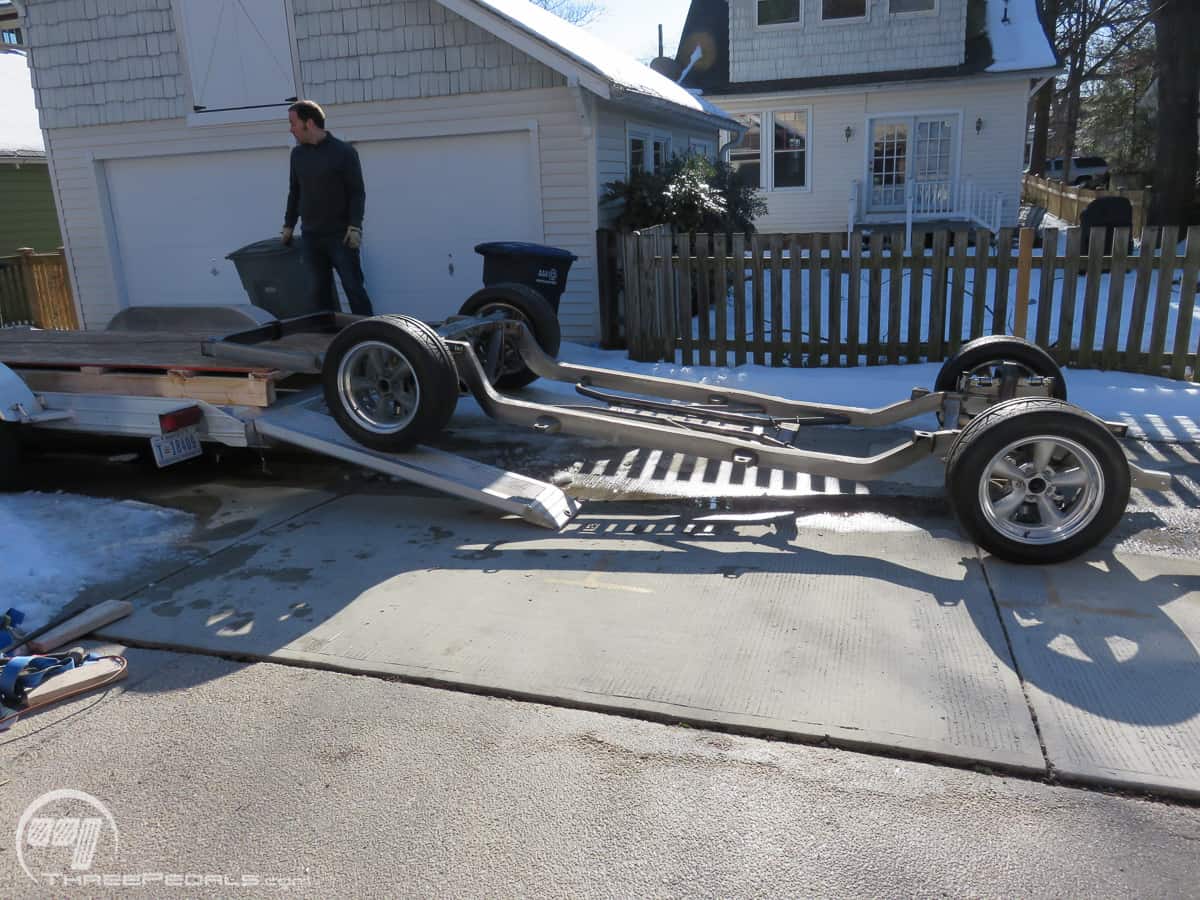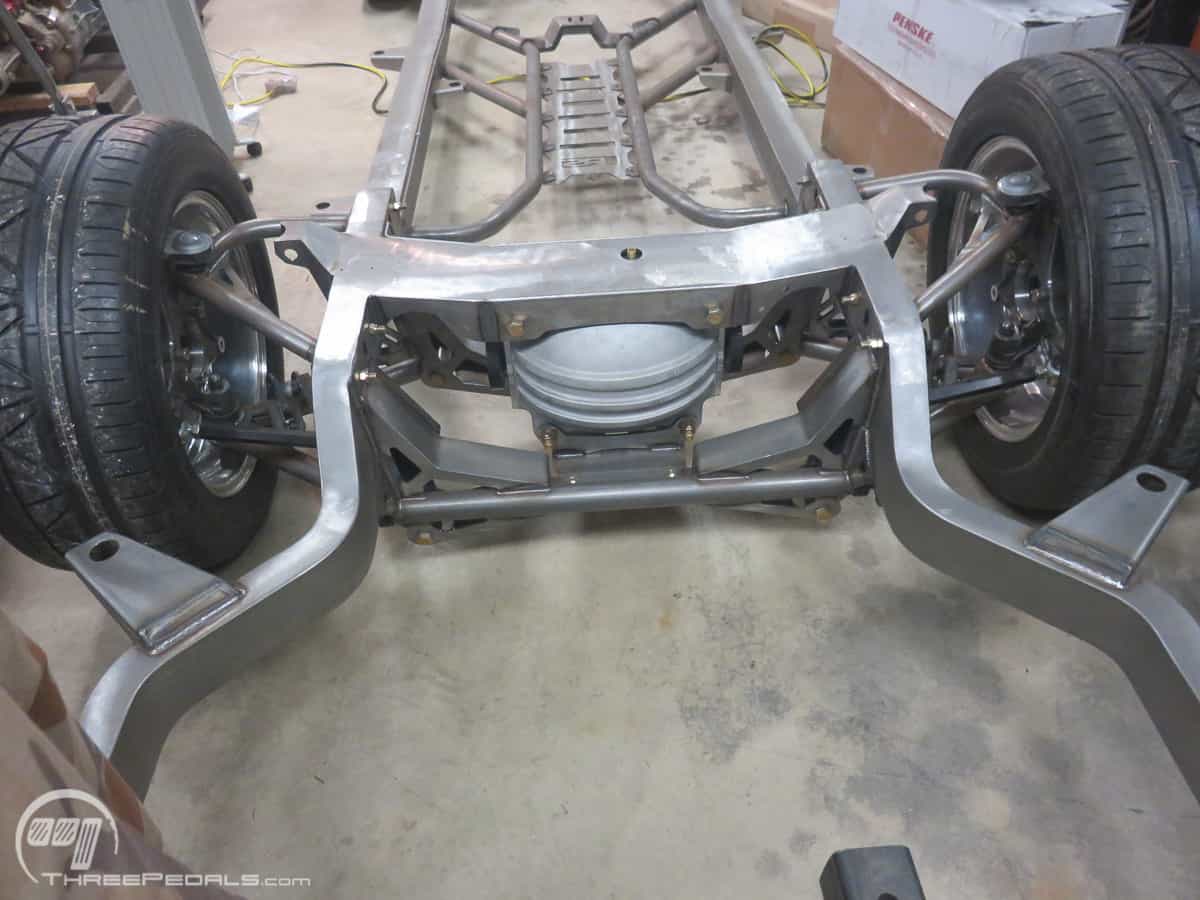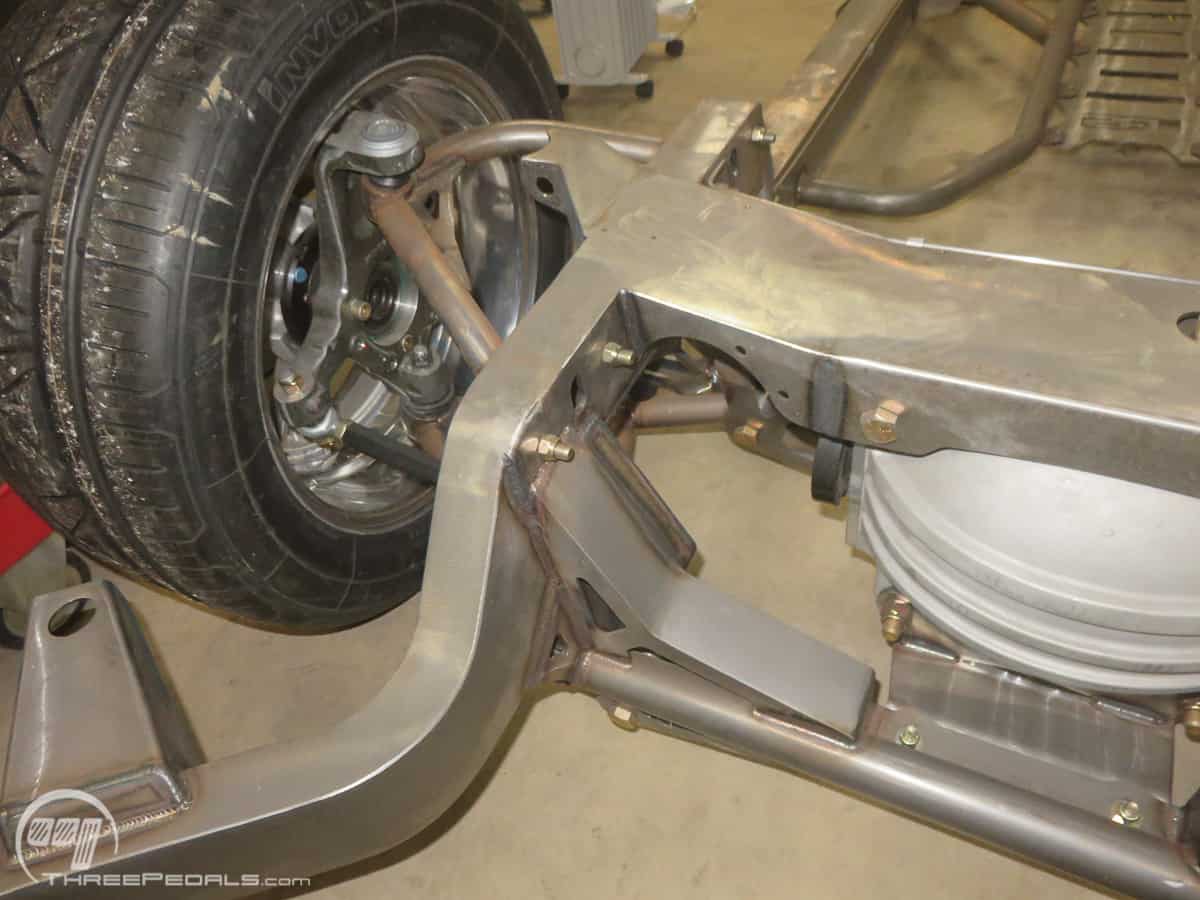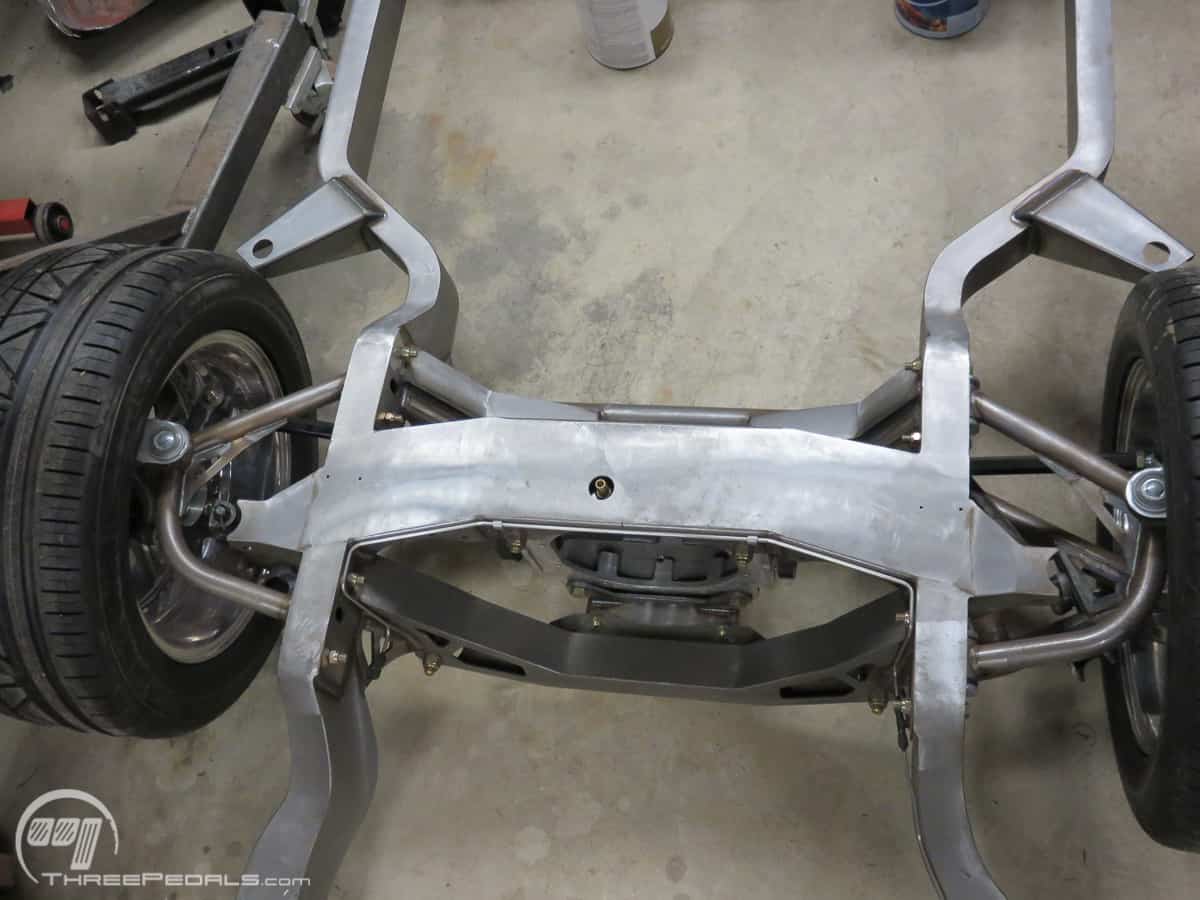The frame (or chassis) of a vehicle is like a skeleton. The engine and transmission attach to the frame, as does the suspension. In a “body on frame” vehicle like my Impala, the body shell sits on top of the frame and provides little to no structural support for the frame. As I plan to drive my Impala hard, I wanted a frame that would offer stellar handling and a comfortable ride. The stock frame would not do. When the Roadster Shop came out with their frame for the ’58 – ’64 Impalas, I had to have one – specifically, their “Fast Track” frame.
The stock frame is an “X-frame” design – when viewed from the top, it’s shaped like an X. Now picture the front suspension at one end, and the rear suspension at the other. Now picture going around a turn. With the front end twisting, how do you think that X holds up? It tends to twist at the middle, the skinny point. GM designed these frames to flex for comfort. For handling? Not so good. Modern suspension systems for performance handling rely on a very rigid frame, relying on the suspension geometry, springs, and shocks to create the desired handling and comfort. The Roadster Shop frame uses a “perimeter” style frame, which incidentally is the style GM moved to in ’65 on their full size cars, and retained through the last year of full size body on frame car production, the ’96 B-Body (Impala, Caprice, etc.). In the photos below the differences in design and execution are pretty obvious.
The Roadster Shop frame utilizes their proprietary front suspension geometry with Corvette C6 spindles. I’ve always wanted independent rear suspension (“IRS”) in my Impala for optimum handling, in place of the stock solid axle, so I checked the box for their proprietary IRS. While drag racers tend to prefer solid axles, road racers prefer IRS. It’s hard to find a rear wheel drive performance car built in the 1980’s or later that doesn’t use IRS.
Roadster Shop offers 1 7/8″ diameter stainless steel headers for LS engines, and I opted for 14″ Baer disc brakes with 6 piston calipers. I also opted for the Penske triple adjustable coil overs with remote reservoirs, because come on, why stop now?
Before buying my frame, I visited Roadster Shop and was blown away by their work. I had seen plenty of their cars in magazines and in person at The SEMA Show, but seeing cars under construction and talking with them confirmed my decision. I played it cool though, and managed to get a ride in one of their cars that happened to have a twin turbo Hemi. Did I mention these guys are awesome?
I also invited myself back to the shop to see my frame under construction. On that visit I excused myself to use the bathroom and slipped on a pair of coveralls, and attempted to casually blend into their shop. But they were wise to that scheme.
One of Roadster Shop’s hallmarks are frame rails that are formed from sheets of 10 gauge steel, as opposed to bent rectangular tubing. This allows for more complex shapes to optimize strength and clearance. Below are my pieces of steel and my rear suspension cradle.
Pictured below is a stack of front suspension cradles. Mine is hiding at the bottom of the pile.


The frame arrives in a giant wooden crate. A spare set of wheels made unloading from the trailer a lot easier.
